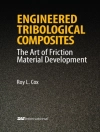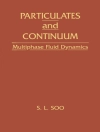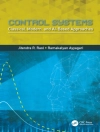The notion dealt with in this volume of proceedings is often traced back to the late 19th-century writings of a rather obscure scientist, C. V. Burton. A probable reason for this is that the painstaking de ciphering of this author’s paper in the Philosophical Magazine (Vol. 33, pp. 191-204, 1891) seems to reveal a notion that was introduced in math ematical form much later, that of local structural rearrangement. This notion obviously takes place on the material manifold of modern con tinuum mechanics. It is more or less clear that seemingly different phe nomena – phase transition, local destruction of matter in the form of the loss of local ordering (such as in the appearance of structural defects or of the loss of cohesion by the appearance of damage or the exten sion of cracks), plasticity, material growth in the bulk or at the surface by accretion, wear, and the production of debris – should enter a com mon framework where, by pure logic, the material manifold has to play a prominent role. Finding the mathematical formulation for this was one of the great achievements of J. D. Eshelby. He was led to consider the apparent but true motion or displacement of embedded material inhomogeneities, and thus he began to investigate the ‘driving force’ causing this motion or displacement, something any good mechanician would naturally introduce through the duahty inherent in mechanics since J. L. d’Alembert.
Cuprins
4d Formalism.- On Establishing Balance and Conservation Laws in Elastodynamics.- From Mathematical Physics to Engineering Science.- Evolving Interfaces.- The Unifying Nature of the Configurational Force Balance.- Generalized Stefan Models.- Explicit Kinetic Relation from “First Principles”.- Growth & Biomechanics.- Surface and Bulk Growth Unified.- Mechanical and Thermodynamical Modelling of Tissue Growth Using Domain Derivation Techniques.- Material Forces in the Context of Biotissue Remodelling.- Numerical Aspects.- Error-Controlled Adaptive Finite Element Methods in Nonlinear Elastic Fracture Mechanics.- Material Force Method. Continuum Damage & Thermo-Hyperelasticity.- Discrete Material Forces in the Finite Element Method.- Computational Spatial and Material Settings of Continuum Mechanics. An Arbitrary Lagrangian Eulerian Formulation.- Dislocations & Peach-Koehler-Forces.- Self-Driven continuous Dislocations and Growth.- Role of the Non-Riemannian Plastic Connection in Finite Elasto-Plasticity with Continuous Distribution of Dislocations.- Peach-Koehler Forces within the Theory of Nonlocal Elasticity.- Multiphysics & Microstructure.- On the Material Energy-Momentum Tensor in Electrostatics and Magnetostatics.- Continuum Thermodynamic and Variational Models for Continua with Microstructure and Material Inhomogeneity.- A Crystal Structure-Based Eigentransformation and its Work-Conjugate Material Stress.- Fracture & Structural Optimization.- Teaching Fracture Mechanics Within the Theory of Strength-of-Materials.- Configurational Thermomech-Anics and Crack Driving Forces.- Structural Optimization by Material Forces.- On Structural Optimisation and Configurational Mechanics.- Path Integrals.- Configurational Forces and the Propagation of a Circular Crack in an Elastic Body.- Thermoplastic M Integral and Path Domain Dependence.- Delamination & Discontinuities.- Peeling Tapes.- Stability and Bifurcation with Moving Discontinuities.- On Fracture Modelling Based on Inverse Strong Discontinuities.- Interfaces & Phase Transition.- Maxwell’s Relation for Isotropic Bodies.- Driving Force in Simulation of Phase Transition Front Propagation.- Modeling of the Thermal Treatment of Steel With Phase Changes.- Plasticity & Damage.- Configurational Stress Tensor in Anisotropic Ductile Continuum Damage Mechanics.- Some Class of SG Continuum Models to Connect Various Length Scales in Plastic Deformation.- Weakly Nonlocal Theories of Damage and Plasticity Based on Balance of Dissipative Material Forces.












